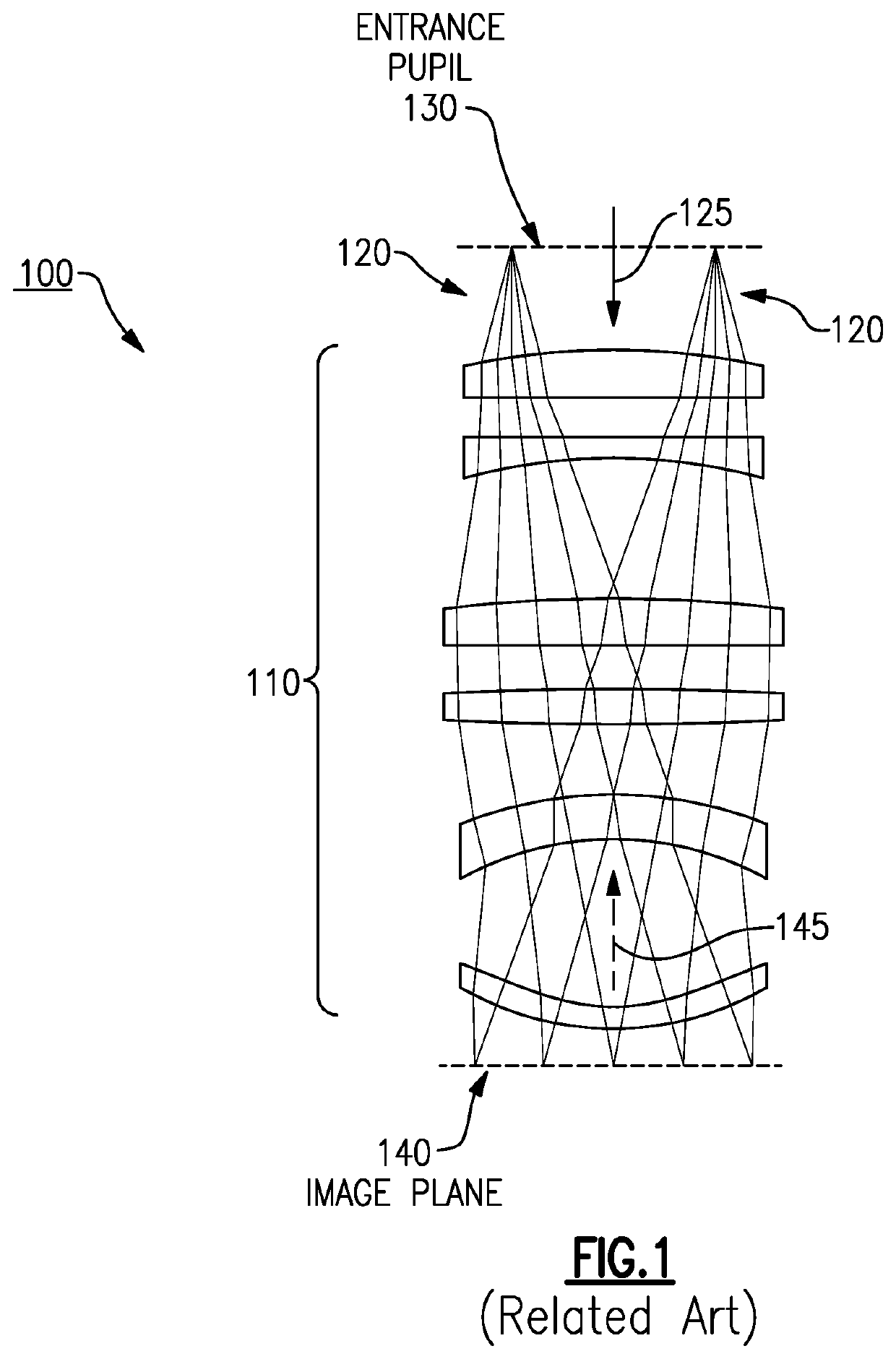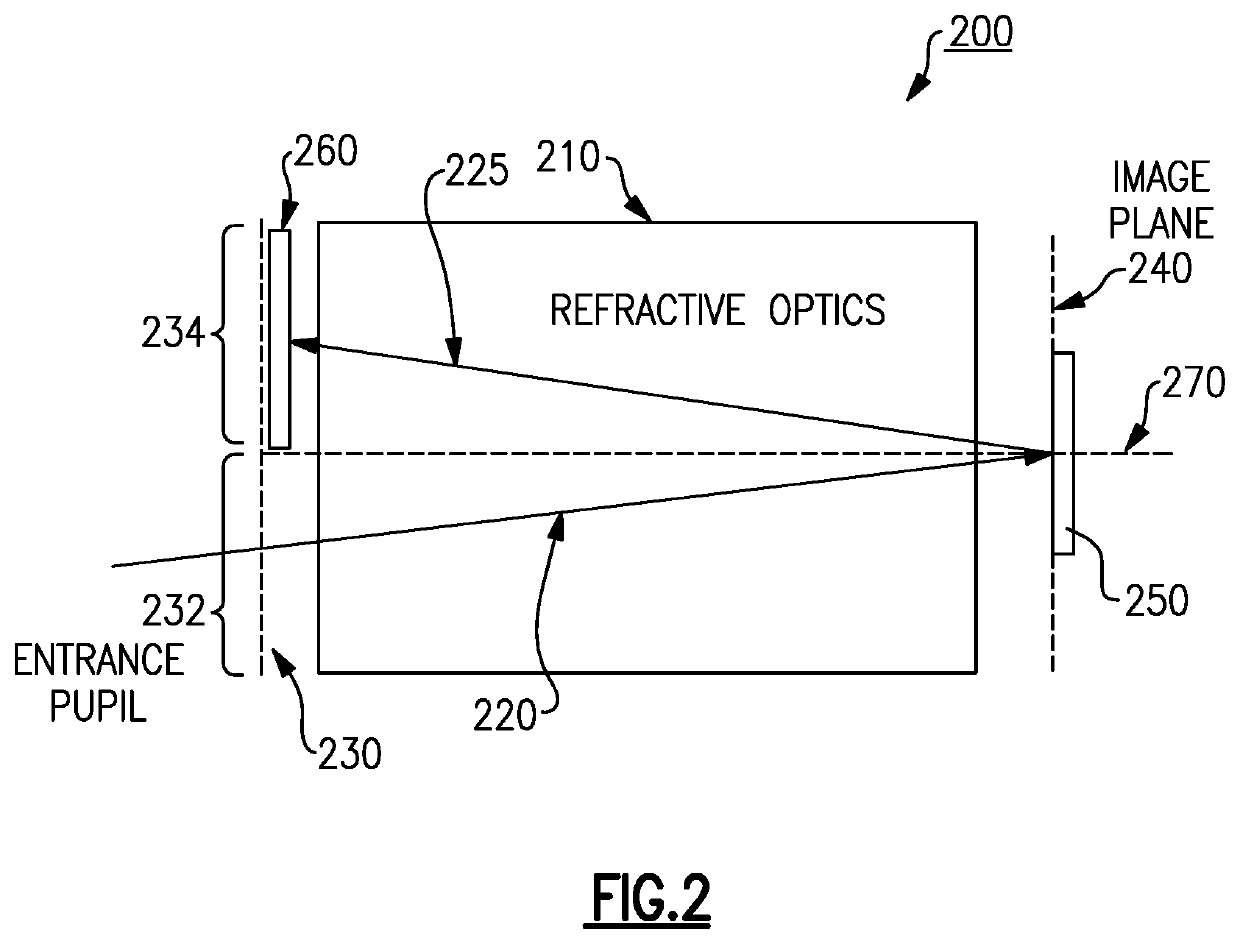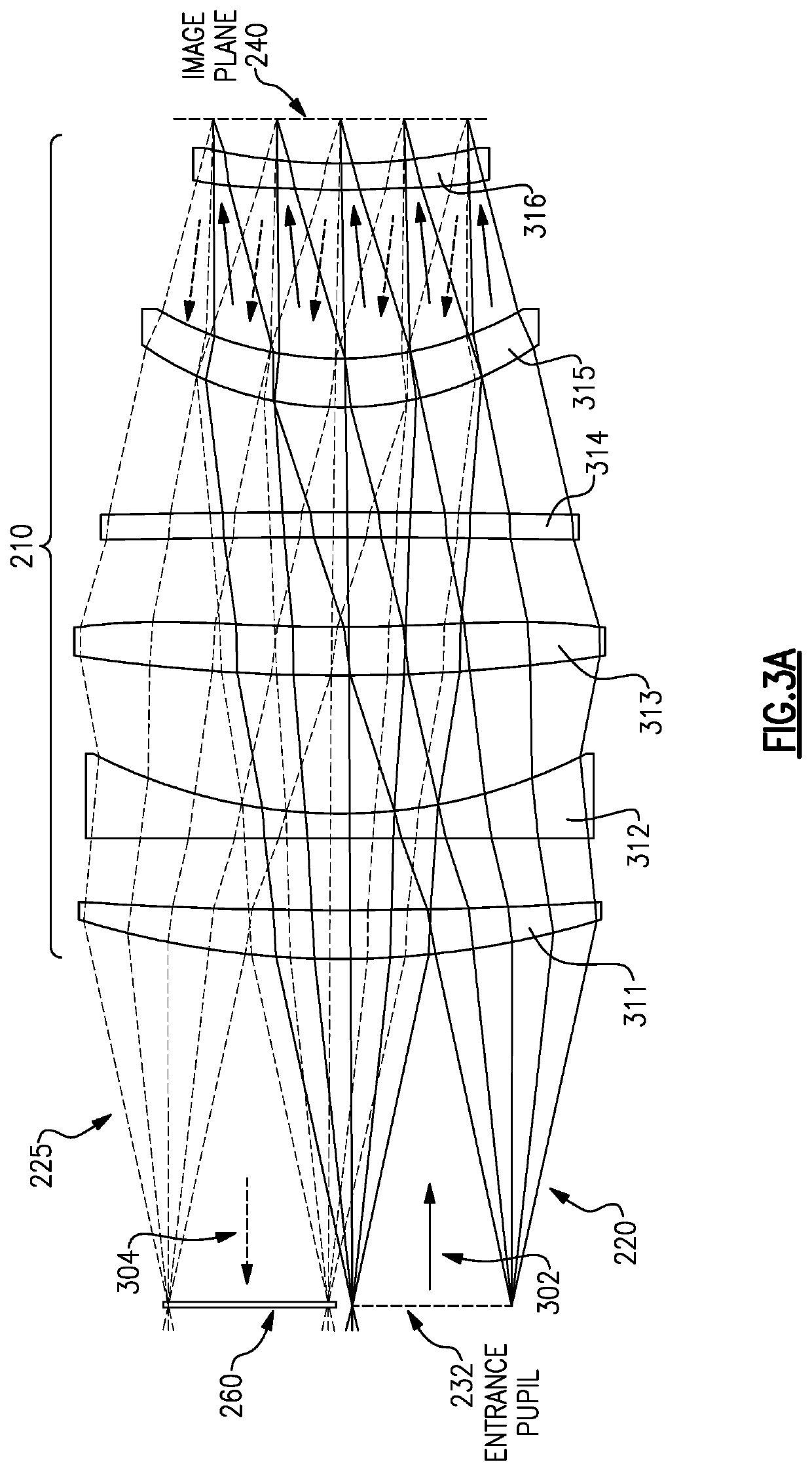Methods and apparatus for reducing specular return from wide field-of-view refractive optics
a wide field of view, refractive optics technology, applied in the field of methods and apparatus for reducing specular return, can solve the problems of reducing reducing so as to reduce the optical cross-section of the imager, eliminate the specular return, and reduce the frequency of the specular return
- Summary
- Abstract
- Description
- Claims
- Application Information
AI Technical Summary
Benefits of technology
Problems solved by technology
Method used
Image
Examples
Embodiment Construction
[0019]Aspects and embodiments are directed to an optical design of a two-dimensional wide field-of-view (WFOV) refractive imager that includes an optical design for greater than twice the required aperture for imaging, with the system configured to use only half the design aperture for actual imaging. The other half of the aperture may be used to entirely block any specular reflections from the imager focal plane array (FPA) as such reflections proceed back through the optical train.
[0020]Referring to FIG. 2, there is illustrated a block diagram of an example of an optical imaging system 200, demonstrating this concept. The optical imaging system 200 includes refractive optics 210 that are configured to receive incident optical radiation 220 via an entrance aperture 230 from a viewed scene and focus the optical radiation 230 onto a focal plane 240 at which an imaging detector 250, such as a focal plane array (FPA) sensor, is located. According to certain embodiments, the optical ima...
PUM
| Property | Measurement | Unit |
|---|---|---|
| diameter | aaaaa | aaaaa |
| field of view | aaaaa | aaaaa |
| transmission | aaaaa | aaaaa |
Abstract
Description
Claims
Application Information
 Login to View More
Login to View More - R&D
- Intellectual Property
- Life Sciences
- Materials
- Tech Scout
- Unparalleled Data Quality
- Higher Quality Content
- 60% Fewer Hallucinations
Browse by: Latest US Patents, China's latest patents, Technical Efficacy Thesaurus, Application Domain, Technology Topic, Popular Technical Reports.
© 2025 PatSnap. All rights reserved.Legal|Privacy policy|Modern Slavery Act Transparency Statement|Sitemap|About US| Contact US: help@patsnap.com



